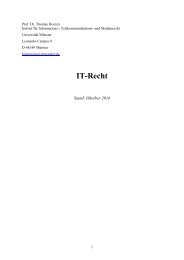3d4yVkKMl
3d4yVkKMl
3d4yVkKMl
You also want an ePaper? Increase the reach of your titles
YUMPU automatically turns print PDFs into web optimized ePapers that Google loves.
- 40 -<br />
117. Objective No. 3. The third objective concerns stock structure. With regard to fin<br />
whales, the programme’s objective is to compare current stock structure to historic information on<br />
that species. With regard to humpback whales and Antarctic minke whales, the plan describes a<br />
need “to investigate shifts in stock boundaries” on a yearly basis.<br />
118. Objective No. 4. The fourth objective concerns the management procedure for<br />
Antarctic minke whale stocks and builds upon the other three objectives. The JARPA II Research<br />
Plan states that the first objective will provide information on biological parameters “necessary for<br />
managing the stocks more efficiently under a revised RMP”, the second objective “will lead to<br />
examining a multi-species management model for the future”, and the third “will supply<br />
information for establishing management areas in the Antarctic Ocean”. According to the Research<br />
Plan, the information relating to the “effects arising from inter-species relationships among the<br />
whale species” could demonstrate that the determination of a catch quota for Antarctic minke<br />
whales under the RMP would be too low, perhaps even set unnecessarily at zero. As noted above<br />
(see paragraph 107), the Parties disagree about the type of information necessary to implement the<br />
RMP.<br />
(ii) Research period and area<br />
119. Japan explains that JARPA II is “a long-term research programme and has no specified<br />
termination date because its primary objective (i.e., monitoring the Antarctic ecosystem) requires a<br />
continuing programme of research”. JARPA II is structured in six-year phases. After each<br />
six-year phase, a review will be held to consider revisions to the programme. The first such<br />
six-year phase was completed after the 2010-2011 season. Following some delay, the first periodic<br />
review of JARPA II by the Scientific Committee is scheduled to take place in 2014.<br />
120. The JARPA II Research Plan operates in an area that is located within the Southern<br />
Ocean Sanctuary established in paragraph 7 (b) of the Schedule to the Convention.<br />
(iii) Research methods and sample size<br />
121. The Research Plan indicates that JARPA II is designed to use a mix of lethal and<br />
non-lethal methods to pursue the research objectives, a point that Japan also made in these<br />
proceedings.<br />
122. Japan asserts that lethal sampling is “indispensable” to JARPA II’s first two objectives,<br />
relating to ecosystem monitoring and multi-species competition modelling. The JARPA II<br />
Research Plan explains that the third objective will rely on “genetic and biological markers” taken<br />
from whales that have been lethally sampled in connection with the first two objectives, as well as<br />
non-lethal methods, namely biopsy sampling from blue, fin and humpback whales.



